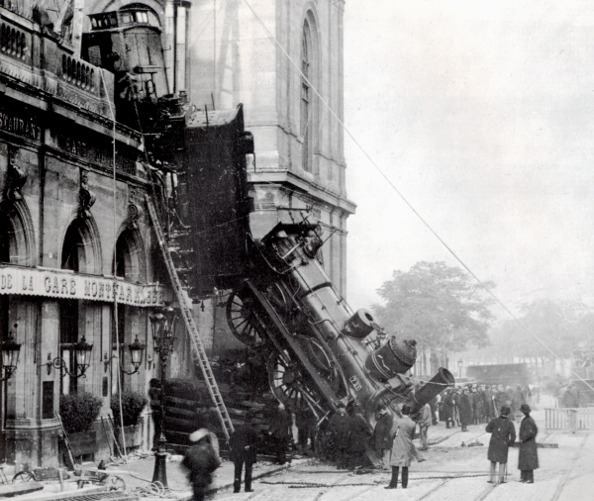The diagnosis of PTSD has seen several iterations over the decades. These differences reflect factors such as socio-cultural and political changes, as well as developments in evidence-based understanding of trauma and its sequalae. What follows is a brief summary of the changes in the formal psychiatric diagnostic criteria, although long before these criteria existed, people recognised these symptoms as evidenced by how the term shell-shock entered the vernacular following WW1. Long before WW1, it is believed that Shakespeare provided historical descriptions of PTSD in his writing, which dates to approximately 1597 (Shay 1994).
One of the earliest recorded scientific presentations about the phenomenon we now know as PTSD was in 1867 where the phenomenon was referred to as ‘Railway Spine’ and outlined as something “sustained by passengers who have been subjected to the violent shock of a railway collision” (pg2 Erichsen 1867). Railway collisions were relatively common for the time.
John Erichsen also went on to note that it was not a phenomenon exclusive to railway collisions “I will not confine my illustrations to cases drawn from railway accidents only, but will show you that precisely the same effects may result from other and more ordinary injuries of civil life.” (pg 22 Erichsen 1867).
The first Diagnostic and Statistical Manual of Mental Disorders was published in 1952 (DSM-I; 1st ed.; American Psychiatric Association, 1952), and what is now known as PTSD was labelled “gross stress reaction”. The main causal factor was listed as stressful environmental events, such as natural disasters or war.
In 1968 the second DSM was published (DSM-II; APA, 1968) and the diagnosis of gross stress reaction was omitted. The DSM-II referred to PTSD-like symptoms as “transient situational disturbance” (p. 48), and the etiology of the symptoms was linked the individual, not the event, as it was believed that “if the patient has good adaptive capacity his symptoms usually recede as the stress diminishes.” (Schubert & Lee, 2009)
In the third revision (DSM III, APS, 1980) following the Vietnam War, the term PTSD was introduced for the first time. The criteria reflected the view that the symptoms occurred as a result of exposure to a significant stressor, and not due the individual.
In 1994, the DSM-IV classified PTSD under Anxiety Disorders.
In 2013 DSM-5 created a new category called “Trauma- and Stressor-Related Disorders,” in which PTSD is now classified.
Since 1980 several changes have been made to the categories within the diagnosis, however the origins of the disorder, that PTSD occurs because of stressful environmental events, has remained unchanged.
References
Peleg, T., & Shalev, A. Y. (2006). Longitudinal studies of PTSD: overview of findings and methods. CNS Spectr, 11(8), 589-602.
Schubert, S., & Lee, C. W. (2009). Adult PTSD and Its Treatment With EMDR: A Review of Controversies, Evidence, and Theoretical Knowledge. Journal of EMDR Practice & Research, 3(3), 117-132. doi: 10.1891/1933-3196.3.3.117
Erichsen, JE (1867). On Railway and Other Injuries of the Nervous System. Philadelphia, PA: Henry C. Lea.
Shay, Jonathan (1994). Achilles in Vietnam: Combat Trauma and the Undoing of Character. Scribner. pp. 165–66.



